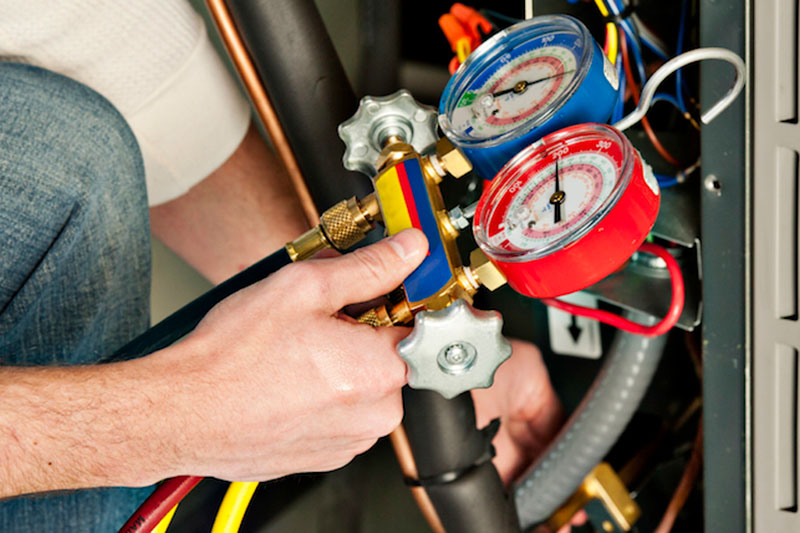
You might not think much about how your air conditioner functions, but it relies on refrigerant to keep your home cold. This refrigerant is subject to environmental rules, because of the chemicals it contains.
Subject to when your air conditioner was put in, it may use R-22, R-410A or R-32 refrigerant. We’ll discuss the differences and which air conditioner refrigerants are being phased out in Plover, in addition to how these phaseouts have on influence on you.
What’s R-22 and Why Is It Phased Out?
If your air conditioner was added before 2010, it probably has Freon®. You can discover if your air conditioner contains it by reaching us at 715-504-0533. You can also inspect the name plate on your air conditioner condenser, which is situated outside your house. This sticker will include details on what model of refrigerant your AC uses.
Freon, which is also called R-22, has chlorine. Scientists consider R-22 to be bad for the earth’s ozone layer and one that prompts global warming. The Environmental Protection Agency, which controls refrigerants in the United States, banned its creation and import in January 2020.
Should I Replace My R-22 Air Conditioner?
It varies. If your air conditioning is cooling properly, you can continue to run it. With regular air conditioner maintenance, you can expect your air conditioning to work around 15–20 years. However, the Department of Energy notes that substituting a 10-year-old air conditioner could save you 20–40% on yearly cooling expenses!
If you don’t replace your air conditioner, it can lead to a problem if you require air conditioning repair later on, specifically for refrigerant. Repairs can be higher-priced, as only reduced quantities of recycled and reclaimed R-22 is accessible.
With the end of R-22, a lot of new air conditioners now use Puron®. Also referred to as R-410A, this refrigerant was made to keep the ozone layer in good shape. As it calls for a varying pressure level, it isn’t compatible with air conditioners that need R-22 for cooling.
However, Puron still has the likelihood to lead to global warming. As a result, it might also sometime be phased out. Although it hasn’t been disclosed yet for residential air conditioners, it’s anticipated sometime this decade.
What Refrigerant Will Replace R-410A?
In preparation of the end, some brands have begun using R-32 in new air conditioners. This refrigerant rates low for global warming likelihood—approximately one-third less than R-410A. And it also decreases energy use by about 10%, according to the Intergovernmental Panel on Climate Change’s Fourth Assessment Report. That’s savings that could be forwarded on to you through your utility expenses.
Point Heating & Cooling Can Provide Support with All Your Air Conditioning Needs
In short, the modifications to air conditioner refrigerant probably won’t impact you a whole lot until you have to have repairs. But as we went over earlier, refrigerant repairs may be pricier due to the reduced levels that are accessible.
Not to mention, your air conditioner frequently stops working at the worst time, typically on the hottest day when we’re getting a lot of other calls for AC repair.
If your air conditioner relies on a discontinued refrigerant or is more than 15 years old, we advise upgrading to an up-to-date, energy-efficient air conditioner. This provides a hassle-free summer and could even lower your utility bills, especially if you select an ENERGY STAR®-rated air conditioner. Plus, Point Heating & Cooling provides many financing solutions to make your new air conditioner fit your budget. Contact us at 715-504-0533 to get started now with a free estimate.
